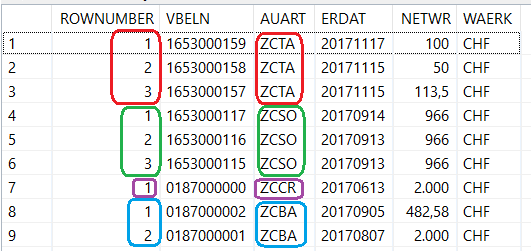
712 rows = 1000000 loops = 1 ) Output : n Sort Key : items. We can get an idea by inquiring about a related query, select distinct rather than count distinct.ĮXPLAIN ( ANALYZE, VERBOSE ) SELECT DISTINCT n FROM items Unique ( cost = 131666. What is happening inside the aggregate though? Its description in the explain output is opaque. 340 rows = 1 loops = 1 ) Output : count ( DISTINCT s ) Buffers : shared hit = 3936 read = 4398, temp read = 5111 written = 5111 -> Seq Scan on public. 702 rows = 1000000 loops = 1 ) Output : n, s Buffers : shared hit = 3904 read = 4430 - plan for the text column, s Aggregate ( cost = 20834. 620 rows = 1 loops = 1 ) Output : count ( DISTINCT n ) Buffers : shared hit = 3904 read = 4430, temp read = 1467 written = 1467 -> Seq Scan on public. 01 rows = 1 width = 4 ) ( actual time = 860. plan for the integer column, n Aggregate ( cost = 20834. Without the trigger the following statement takes an average of 4.7 seconds, whereas inserts with the trigger are fifty times slower: However this technique shifts overhead to inserts and deletes. The speed of reading and updating the cached value is independent of the table size, and reading is very fast. The sections below use the following table for benchmarks.īEGIN CREATE TABLE row_counts ( relname text PRIMARY KEY, reltuples bigint ) - establish initial count INSERT INTO row_counts ( relname, reltuples ) VALUES ( 'items', ( SELECT count ( * ) from items )) CREATE OR REPLACE FUNCTION adjust_count () RETURNS TRIGGER AS $$ DECLARE BEGIN IF TG_OP = 'INSERT' THEN EXECUTE 'UPDATE row_counts set reltuples=reltuples +1 where relname = '' ' || TG_RELNAME || ' '' ' RETURN NEW ELSIF TG_OP = 'DELETE' THEN EXECUTE 'UPDATE row_counts set reltuples=reltuples -1 where relname = '' ' || TG_RELNAME || ' '' ' RETURN OLD END IF END $$ LANGUAGE 'plpgsql' CREATE TRIGGER items_count BEFORE INSERT OR DELETE ON items FOR EACH ROW EXECUTE PROCEDURE adjust_count () COMMIT
WHERE CLAUSE USING COUNT HOW TO
After learning about techniques for a single database we’ll use Citus to demonstrate how to parallelize counts in a distributed database. We’ll analyze the techniques available for each situation and compare their speed and resource consumption.

Next, are you counting duplicates or just distinct values? Finally do you want a lump count of an entire table or will you want to count only those rows matching extra criteria? First think whether you need an exact count or whether an estimate suffices. The problem is actually underdescribed-there are several variations of counting, each with its own methods. If you know the tricks there are ways to count rows orders of magnitude faster than you do already. This article is a close look into how PostgreSQL optimizes counting. The query is as follows mysql> insert into CountWithSubqueryDemo(EmployeeName) values('James') Everybody counts, but not always quickly. The query is as follows mysql> truncate table CountWithSubqueryDemo Therefore, let us delete all records from the table and insert 2 records in the table. In the above query we are getting empty set because it returns the row if the table have two records only. > select count(*) from CountWithSubqueryDemo The following is how you can use actual row count in where clause mysql> select Id,EmployeeName from CountWithSubqueryDemo The query is as follows mysql> select *from CountWithSubqueryDemo Mysql> insert into CountWithSubqueryDemo(EmployeeName) values('James') ĭisplay all records from the table using select statement.

Mysql> insert into CountWithSubqueryDemo(EmployeeName) values('Mike') Mysql> insert into CountWithSubqueryDemo(EmployeeName) values('Sam')

Mysql> insert into CountWithSubqueryDemo(EmployeeName) values('Bob') Mysql> insert into CountWithSubqueryDemo(EmployeeName) values('') Mysql> insert into CountWithSubqueryDemo(EmployeeName) values('Carol') Mysql> insert into CountWithSubqueryDemo(EmployeeName) values(NULL) The query is as follows mysql> insert into CountWithSubqueryDemo(EmployeeName) values('John') Insert some records in the table using insert command. > Id int NOT NULL AUTO_INCREMENT PRIMARY KEY, The query to create a table is as follows mysql> create table CountWithSubqueryDemo To understand the concept, let us create a table. The syntax is as follows SELECT yourColumnName1,yourColumnName2.N FROM yourTableName

Achieve this with the help of where clause.


 0 kommentar(er)
0 kommentar(er)
